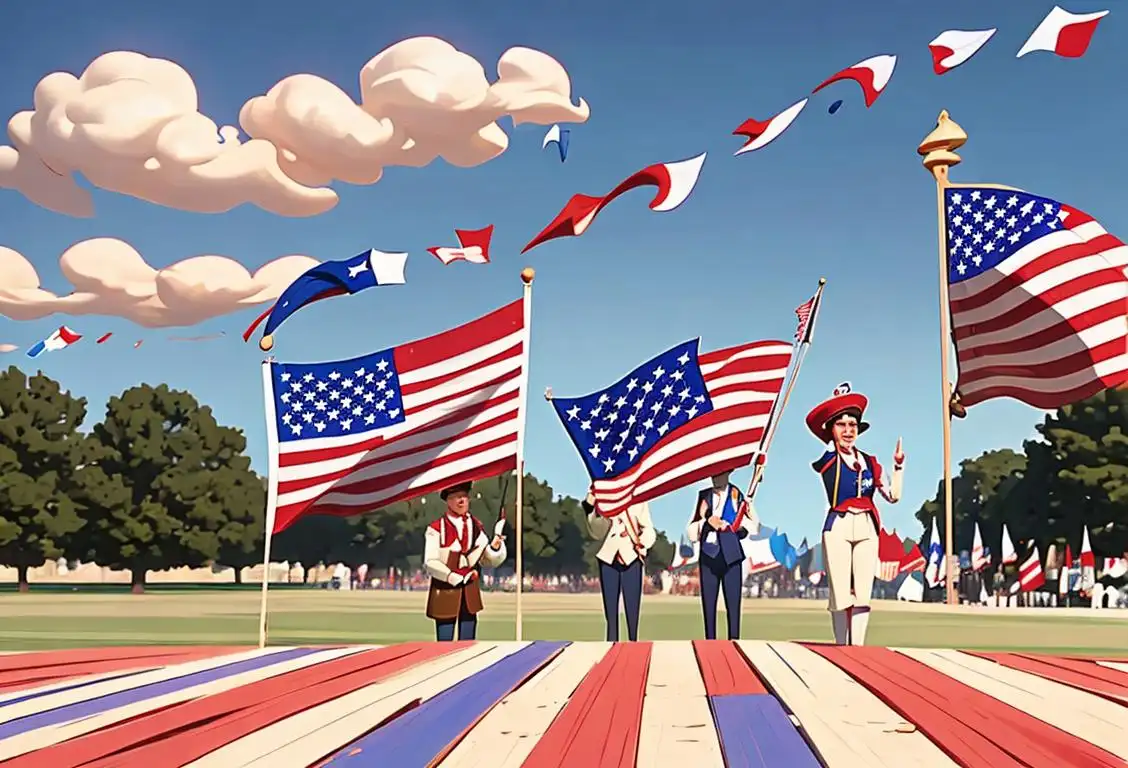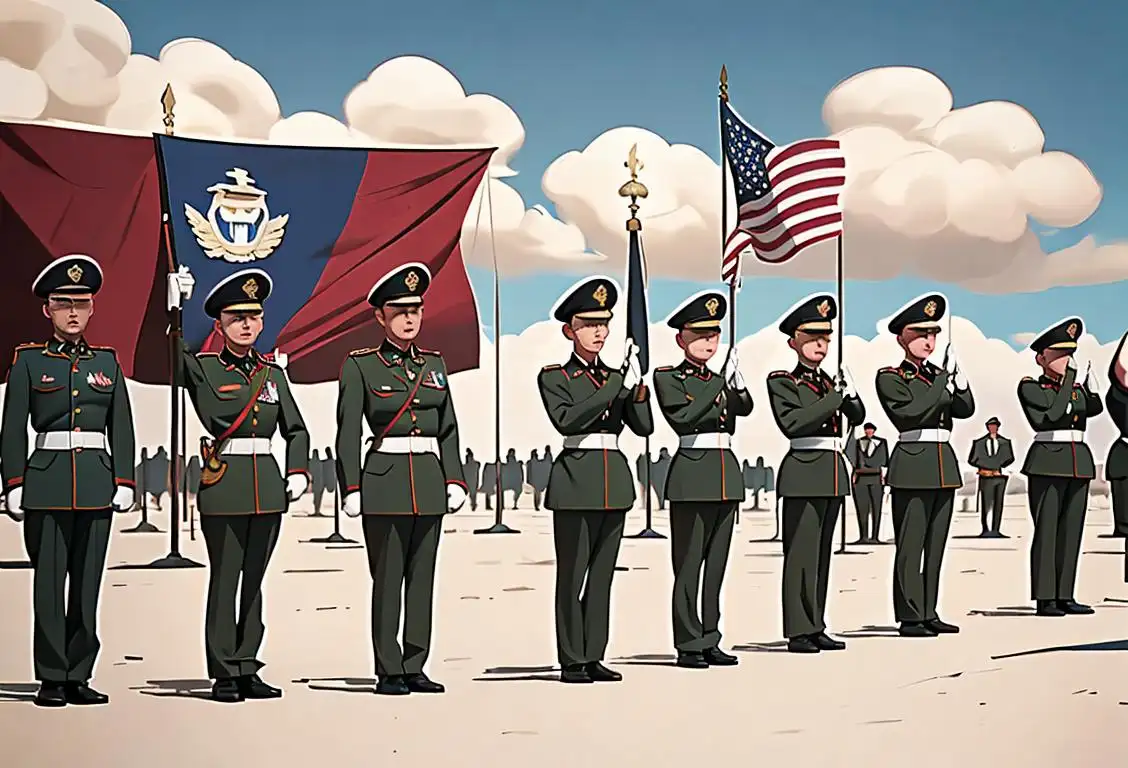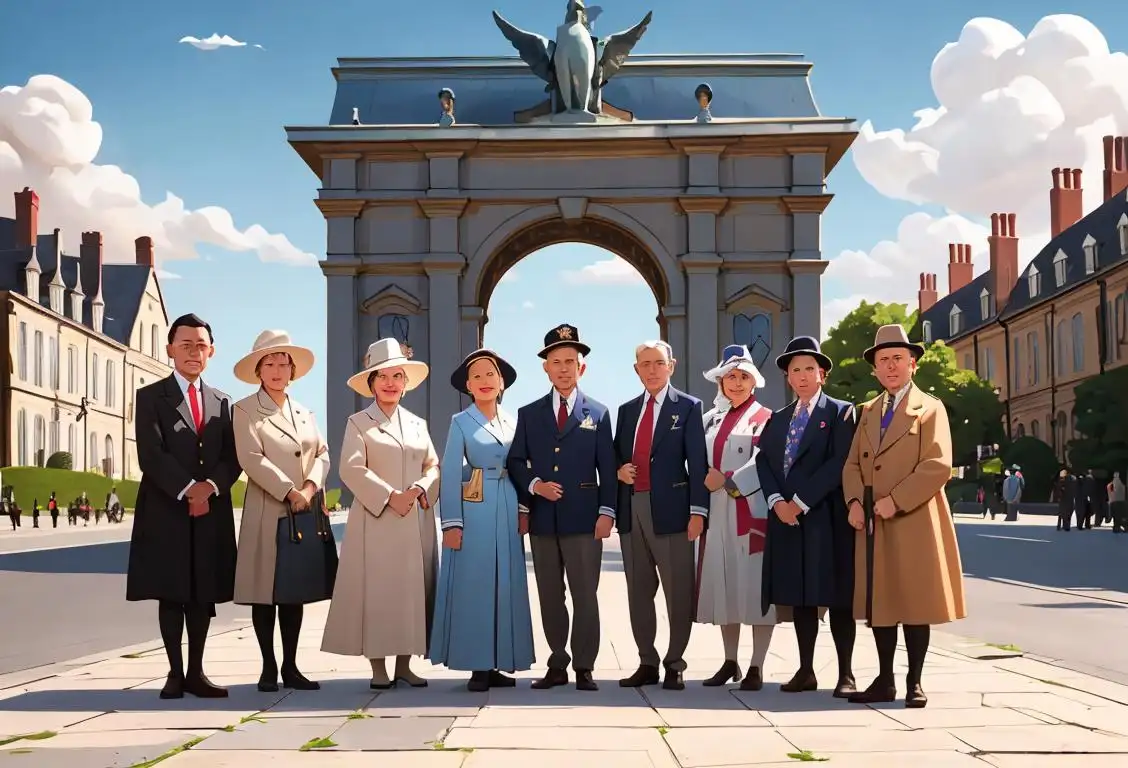National Flag Day

Hold on to your stars and stripes, it's National Flag Day! Now, Flag Day isn't known for wild parties or flashy parades, but boy does it have a fascinating history. So, grab a glass of cold lemonade, sit back and let's go on a fun-filled journey through the internet history of National Flag Day.
When is Flag Day?
It's national flag day on the 14th June.
The Buzz of the Flag Day Online
In our digital detective work, we tracked down a whopping 41322 mentions of National Flag Day. Not bad for a day that's often overshadowed by its noisy neighbor, Independence Day. The peak of these patriotic proclamations happened on 14th June 2017. It seems this was a year when the internet decided to particularly embrace its inner patriot and shout 'long live the flag!' from the digital rooftops.
The Stars and Stripes Backstory
The origins of Flag Day take us back far beyond the web. The United States' flag was officially adopted on June 14, 1777, hence why we celebrate every June 14th. But it wasn't until 1916 that President Woodrow Wilson proclaimed it as a national day. The internet, of course, has given Flag Day a newfound platform, turning what was a modest commemoration into a trending topic.
Flag Day and the Internet
On the web, you'll find Flag Day popping up in the most unexpected places. From Facebook posts of flag-themed cookies to patriotic puns trending on Twitter, Flag Day has found its digital voice. And let's not forget about those Instagram posts of adorable pet photos with the flag as a backdrop. Now that's what we call pawsitively patriotic!
History behind the term 'Flag'
1000 BCE
Early Origins
The term 'flag' traces its origins back to around 1000 BCE. In ancient civilizations, flags were used as military standards and symbols of identification. These early flags were typically made of cloth or animal skins and were often adorned with colorful designs or symbols representing the ruler or that specific nation.
1191 CE
Knights and Tournament Flags
During the medieval period, flags began to take on new meanings. In 1191 CE, during the Third Crusade, knightly orders started using personal flags or banners to identify themselves in battle. These flags often displayed emblems or coats of arms unique to each knight. Additionally, tournament flags became popular during this time, displaying the colors and insignia of the participating knights or noble families.
1625 CE
National Flags
The concept of national flags emerged during the early modern period, around 1625 CE. European nations, including England, France, and the Netherlands, began adopting national flags to represent their countries. The designs of these flags often incorporated elements from royal coats of arms or symbols associated with the ruling monarchy. The national flag served as a visual representation of the country's identity, unity, and sovereignty.
1777 CE
US Flag
The term 'flag' gained significant prominence in 1777 CE when the United States officially adopted its first national flag, known as the Stars and Stripes. The design featured 13 alternating red and white stripes, representing the original thirteen colonies, along with a blue canton containing a circle of 13 stars to symbolize unity. This flag has gone through multiple iterations and today remains a powerful symbol of American patriotism.
1900 CE
Olympic Flags
In 1896 CE, at the start of the modern Olympic Games, flags took on another role. An important tradition was introduced in 1900 CE when participating countries paraded their national flags during the Opening Ceremony. This display of flags became an iconic symbol of international unity, sportsmanship, and friendly competition, further popularizing the use of flags as a means of representation on a global scale.
1945 CE
Flag of the United Nations
As a culmination of multinational collaboration after World War II, the United Nations officially adopted its flag in 1945 CE. The design featured a light blue field with a world map and olive branches, symbolizing peace and international cooperation. This flag serves as a powerful reminder of the importance of diplomacy and unity among nations.
1969 CE
Moon Landing Flag
One of the most iconic moments in flag history occurred during NASA's Apollo 11 mission in 1969 CE. Neil Armstrong and Buzz Aldrin planted the first flag on the moon's surface. The flag featured a white field with a blue canton containing stars, similar in design to the American flag. Although the flag is now likely to be faded and bleached due to the harsh lunar environment, it stands as a symbol of human achievement and exploration.
Present
Symbol of Identity
Today, flags continue to serve as symbols of identity, patriotism, and cultural heritage. They can represent countries, regions, organizations, social movements, and more. The term 'flag' has evolved and expanded its significance over time, becoming an essential part of our shared visual language and a representation of the diverse world we live in.
Did you know?
Did you know that the current design of the US flag was the result of a high school project? In 1958, Robert G. Heft designed it for a class project and originally received a B- for his efforts. Luckily, his grade was eventually bumped up to an A after his design was chosen out of 1,500 entries.Tagged
fun rememberance history patriotism social media trendsFirst identified
23rd April 2015Most mentioned on
14th June 2017Total mentions
41322Other days
Flag Day
Flag On Independence Day
Liberation Day
Random Acts Of Kindness Day
Flag Of Canada Day
Armed Forces Day
Purple Heart Day
Religious Freedom Day
Memorial Day
Commemorative Day








